-
×
 The Irish Identity: Independence, History, and Literature By Marc Conner
1 × $5,00
The Irish Identity: Independence, History, and Literature By Marc Conner
1 × $5,00 -
×
 Resonance Healing with Pendulums By Erich Hunter & Clarissa Barrazza - Pendulum Alchemy
1 × $31,00
Resonance Healing with Pendulums By Erich Hunter & Clarissa Barrazza - Pendulum Alchemy
1 × $31,00 -
×
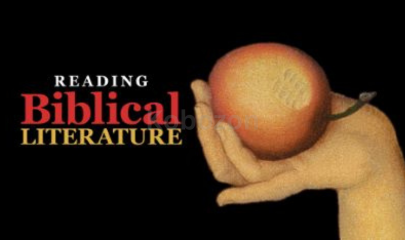 Reading Biblical Literature: Genesis to Revelation By Craig Koester
1 × $5,00
Reading Biblical Literature: Genesis to Revelation By Craig Koester
1 × $5,00 -
×
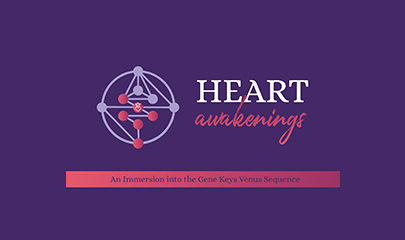 Heart Awakenings By Unlock Your Design Academy
1 × $46,00
Heart Awakenings By Unlock Your Design Academy
1 × $46,00 -
×
 Behavioral Couples Therapy With Richard Stuart
1 × $8,00
Behavioral Couples Therapy With Richard Stuart
1 × $8,00 -
×
 Product Marketing Resume Boost By Melinda Chung
1 × $23,00
Product Marketing Resume Boost By Melinda Chung
1 × $23,00 -
×
 Agency Partner Program By Jason Wardrop
1 × $15,00
Agency Partner Program By Jason Wardrop
1 × $15,00 -
×
 Understanding the Dark Side of Human Nature By Daniel Breyer
1 × $5,00
Understanding the Dark Side of Human Nature By Daniel Breyer
1 × $5,00 -
×
 Infield Mastery Program By Matt Artisan
1 × $69,00
Infield Mastery Program By Matt Artisan
1 × $69,00 -
×
 PUA Cribs: Project Bel-Air by Johnny Wolf
1 × $5,00
PUA Cribs: Project Bel-Air by Johnny Wolf
1 × $5,00 -
×
 The Everyday Gourmet: Making Healthy Food Taste Great By Bill Briwa & Connie Guttersen
1 × $5,00
The Everyday Gourmet: Making Healthy Food Taste Great By Bill Briwa & Connie Guttersen
1 × $5,00 -
×
 Thumbnail University By Film Booth
1 × $5,00
Thumbnail University By Film Booth
1 × $5,00 -
×
 Relationships Revival By Relationships Mastered
1 × $69,00
Relationships Revival By Relationships Mastered
1 × $69,00 -
×
 Sacred Success Coaching Method By Eden Carpenter
1 × $139,00
Sacred Success Coaching Method By Eden Carpenter
1 × $139,00 -
×
 Million Dollar Masterclass By Eileen Wilder
1 × $85,00
Million Dollar Masterclass By Eileen Wilder
1 × $85,00 -
×
 The Everyday Gourmet: How to Master Outdoor Cooking By Bill Briwa & Patrick Clark
1 × $5,00
The Everyday Gourmet: How to Master Outdoor Cooking By Bill Briwa & Patrick Clark
1 × $5,00 -
×
 Metabolic And L1 Fundamentals Bundle By MovNat
1 × $101,00
Metabolic And L1 Fundamentals Bundle By MovNat
1 × $101,00 -
×
 PowerPoint Pro 3.0 (PowerPoint And VBA) 2024 By Breaking Into Wall Street
1 × $46,00
PowerPoint Pro 3.0 (PowerPoint And VBA) 2024 By Breaking Into Wall Street
1 × $46,00 -
×
 The Performance Stretch System Level 1 By The Stretch Therapists
1 × $139,00
The Performance Stretch System Level 1 By The Stretch Therapists
1 × $139,00 -
×
 How to Use Brain Science to Help Patients Accelerate Healing after Trauma By NICABM
1 × $39,00
How to Use Brain Science to Help Patients Accelerate Healing after Trauma By NICABM
1 × $39,00 -
×
 Playing Guitar like a Pro: Lead, Solo, and Group Performance By Colin McAllister
1 × $5,00
Playing Guitar like a Pro: Lead, Solo, and Group Performance By Colin McAllister
1 × $5,00 -
×
 Affiliate Marketing Business Blueprint By David Sharpe
1 × $31,00
Affiliate Marketing Business Blueprint By David Sharpe
1 × $31,00 -
×
 The Everyday Gourmet: Making Great Meals in Less Time By Bill Briwa
1 × $5,00
The Everyday Gourmet: Making Great Meals in Less Time By Bill Briwa
1 × $5,00 -
×
 Foundations of Western Civilization II: A History of the Modern Western World By Robert Bucholz
1 × $5,00
Foundations of Western Civilization II: A History of the Modern Western World By Robert Bucholz
1 × $5,00 -
×
 Ghost Hunting & Paranormal Investigation with your Pendulum By Pendulum Alchemy
1 × $31,00
Ghost Hunting & Paranormal Investigation with your Pendulum By Pendulum Alchemy
1 × $31,00 -
×
 Secrets Of Subtle Sales Mastery Deluxe By Paul Ross
1 × $23,00
Secrets Of Subtle Sales Mastery Deluxe By Paul Ross
1 × $23,00 -
×
 SATYA 3 - Online Immersion - March 2023 By Tias Little
1 × $225,00
SATYA 3 - Online Immersion - March 2023 By Tias Little
1 × $225,00 -
×
 This Day in History: August By Wondrium
1 × $5,00
This Day in History: August By Wondrium
1 × $5,00 -
×
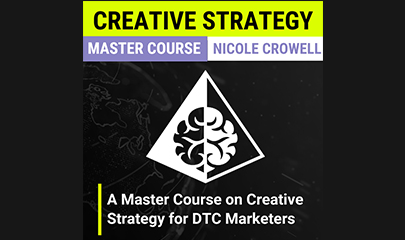 Creative Strategy Master Course By Nicole Crowell
1 × $54,00
Creative Strategy Master Course By Nicole Crowell
1 × $54,00 -
×
 Whole-Foods Plant-Based Cooking By Amy Symington
1 × $6,00
Whole-Foods Plant-Based Cooking By Amy Symington
1 × $6,00 -
×
 7 Figure Sales Training and Script Bundle By Eric Cline
1 × $319,00
7 Figure Sales Training and Script Bundle By Eric Cline
1 × $319,00 -
×
 UI Design and Figma Mastery By Arash Ahadzadeh
1 × $5,00
UI Design and Figma Mastery By Arash Ahadzadeh
1 × $5,00 -
×
 The Federal Code Government Contracting By Jason White
1 × $23,00
The Federal Code Government Contracting By Jason White
1 × $23,00 -
×
 The Absolute Power of Blend If By Blake Rudis
1 × $5,00
The Absolute Power of Blend If By Blake Rudis
1 × $5,00 -
×
 2 Phase AI Trade Spy Total Immersion Experience By Jeff Bierman - The Quant Guy
1 × $209,00
2 Phase AI Trade Spy Total Immersion Experience By Jeff Bierman - The Quant Guy
1 × $209,00 -
×
 Website Design Course by Josh Hall
1 × $5,00
Website Design Course by Josh Hall
1 × $5,00 -
×
 Ultimate Guide to HARO Success By Easy Peasy Blogging
1 × $15,00
Ultimate Guide to HARO Success By Easy Peasy Blogging
1 × $15,00 -
×
 Training Session - Side Control Attacks by Renzo Gracie
1 × $6,00
Training Session - Side Control Attacks by Renzo Gracie
1 × $6,00 -
×
 Core Financial Modeling 2024 By Breaking Into Wall Street
1 × $69,00
Core Financial Modeling 2024 By Breaking Into Wall Street
1 × $69,00 -
×
 Crypto Salary Incubator By Scott Phillips
1 × $69,00
Crypto Salary Incubator By Scott Phillips
1 × $69,00 -
×
 Lost Christianities: Christian Scriptures and the Battles over Authentication By Bart Ehrman
1 × $5,00
Lost Christianities: Christian Scriptures and the Battles over Authentication By Bart Ehrman
1 × $5,00 -
×
 Mergers and Acquisitions Toolkit By Domont Consulting
1 × $23,00
Mergers and Acquisitions Toolkit By Domont Consulting
1 × $23,00 -
×
 Investment Banking Networking Toolkit 2024 By Breaking Into Wall Street
1 × $39,00
Investment Banking Networking Toolkit 2024 By Breaking Into Wall Street
1 × $39,00 -
×
 Corporate Restructuring By Wall Street Prep
1 × $85,00
Corporate Restructuring By Wall Street Prep
1 × $85,00 -
×
 The Power of Boldness 2023 By Naveen Jain - MindValley
1 × $6,00
The Power of Boldness 2023 By Naveen Jain - MindValley
1 × $6,00 -
×
 Fitness Business Essentials Bundle By Carroll Performance
1 × $458,00
Fitness Business Essentials Bundle By Carroll Performance
1 × $458,00 -
×
 MILLION DOLLAR DIVA By Ingrid Arna
1 × $124,00
MILLION DOLLAR DIVA By Ingrid Arna
1 × $124,00 -
×
 Make Small Talk Sexy 2.0 by Bobby Rio
1 × $5,00
Make Small Talk Sexy 2.0 by Bobby Rio
1 × $5,00 -
×
 Perfect Eye Contact II – She Looked Now What by Sean Messenger
1 × $5,00
Perfect Eye Contact II – She Looked Now What by Sean Messenger
1 × $5,00 -
×
 Advanced Overcoming Objections By Andy Elliott
1 × $69,00
Advanced Overcoming Objections By Andy Elliott
1 × $69,00 -
×
 The History of Christianity: From the Disciples to the Dawn of the Reformation By Luke Timothy Johnson
1 × $5,00
The History of Christianity: From the Disciples to the Dawn of the Reformation By Luke Timothy Johnson
1 × $5,00 -
×
 Adobe Photoshop CC Bootcamp By Blake Rudis
1 × $5,00
Adobe Photoshop CC Bootcamp By Blake Rudis
1 × $5,00 -
×
 Framer Masterclass 2.0 by Matt Jumper
1 × $77,00
Framer Masterclass 2.0 by Matt Jumper
1 × $77,00 -
×
 Style Guide for Modern Men
1 × $5,00
Style Guide for Modern Men
1 × $5,00 -
×
 Land Flipping 101 Course By Kris Thomas
1 × $209,00
Land Flipping 101 Course By Kris Thomas
1 × $209,00 -
×
 Options Trading with Nick And Gareth By Nick Santiago And Gareth Soloway - InTheMoneyStocks
1 × $31,00
Options Trading with Nick And Gareth By Nick Santiago And Gareth Soloway - InTheMoneyStocks
1 × $31,00 -
×
 P2 Virtual Selling Accelerator By Brett Kitchen & Ethan Kap
1 × $5,00
P2 Virtual Selling Accelerator By Brett Kitchen & Ethan Kap
1 × $5,00 -
×
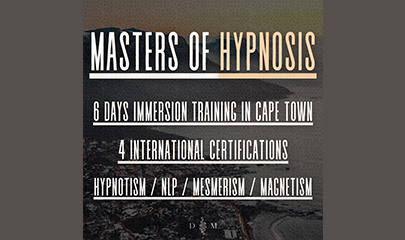 MASTERS OF HYPNOSIS Course 2023 By David Mears
1 × $233,00
MASTERS OF HYPNOSIS Course 2023 By David Mears
1 × $233,00 -
×
 Selections in Photoshop By Colin Smith
1 × $5,00
Selections in Photoshop By Colin Smith
1 × $5,00 -
×
 Product Marketing Bootcamp By Melinda Chung
1 × $85,00
Product Marketing Bootcamp By Melinda Chung
1 × $85,00 -
×
 TikTok Ads Mastery 2024 By Chase Chappell
1 × $23,00
TikTok Ads Mastery 2024 By Chase Chappell
1 × $23,00 -
×
 CFO Excel Dashboard And Reporting By Josh Aharonoff
1 × $23,00
CFO Excel Dashboard And Reporting By Josh Aharonoff
1 × $23,00 -
×
 The 3rd volume of the hugely successful 2GTS Program! - Sexual Mastery Club by 2 Girls Teach Sex
1 × $5,00
The 3rd volume of the hugely successful 2GTS Program! - Sexual Mastery Club by 2 Girls Teach Sex
1 × $5,00 -
×
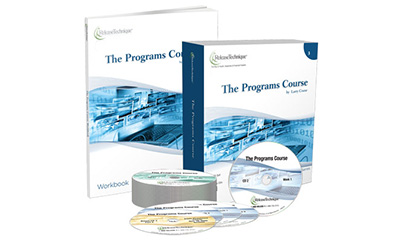 The Programs Course By Larry Crane - Release Technique
1 × $46,00
The Programs Course By Larry Crane - Release Technique
1 × $46,00 -
×
 Messaging Program By Phoebe Kuhn - The Content Emporium
1 × $209,00
Messaging Program By Phoebe Kuhn - The Content Emporium
1 × $209,00
The Science of Integrative Medicine By Brent Bauer
$119,00 $5,00
SKU: KOB.52834VieqGg
Category: Health
Tags: Brent Bauer, Medicine, The Science of Integrative Medicine
Review of The Science of Integrative Medicine by Brent A. Bauer – Digital Download!
Let’s embark on a captivating adventure to uncover remarkable insights that spark your curiosity and elevate your understanding
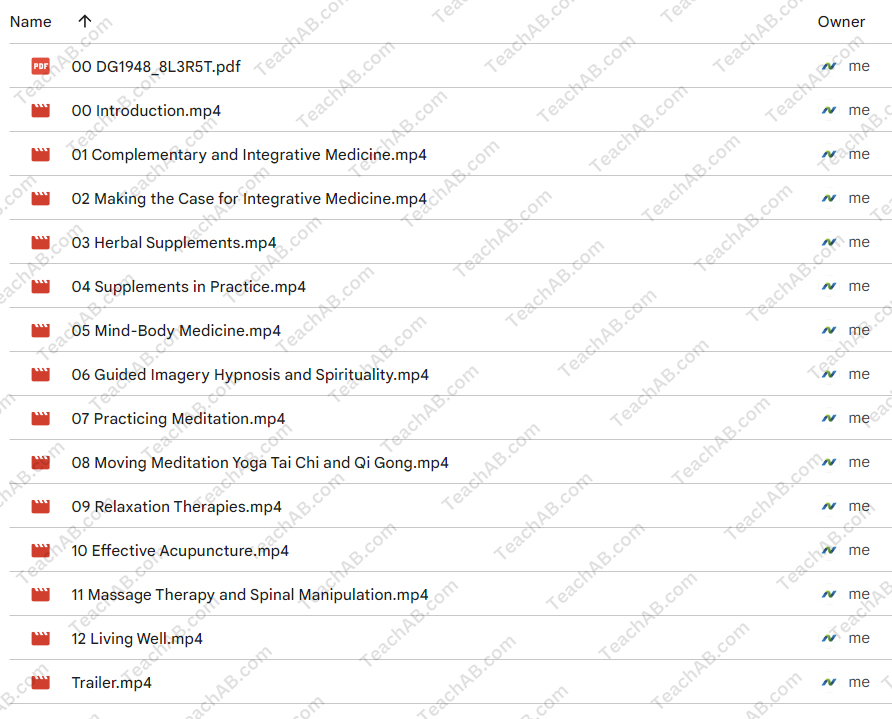
The Science of Integrative Medicine By Brent Bauer
Overview

Review of The Science of Integrative Medicine by Brent A. Bauer
In a world where the complexities of health and wellness often intertwine, finding a balanced approach to medicine can feel like navigating through a dense forest. “The Science of Integrative Medicine” by Brent A. Bauer emerges as a guiding light, illuminating pathways that combine conventional medicine with complementary therapies. As an esteemed figure at the Mayo Clinic, Dr. Bauer’s expertise resonates throughout the pages of this enlightening work. This comprehensive overview not only introduces the principles of integrative medicine but also explores a variety of therapeutic methods backed by scientific evidence. Through a tapestry of mind-body practices, herbal supplements, and relaxation techniques, this book challenges preconceived notions and endeavors to provide readers with actionable insights for holistic health.
Understanding Integrative Medicine
Integrative medicine is defined as a comprehensive approach that combines traditional Western medical practices with alternative treatments to foster holistic well-being. The key tenet here is synergy; akin to a well-rehearsed orchestra, it marries the precision of conventional medical approaches with the richness of complementary therapies. From yoga and acupuncture to the use of herbal supplements, integrative medicine offers a versatile toolkit for enhancing health and wellness.
- Mind-Body Medicine: A cornerstone of integrative medicine, this practice emphasizes the profound connection between mental and physical states. Techniques such as meditation and guided imagery not only reduce stress but also contribute positively to various medical conditions. Research indicates that practices focusing on mental well-being can lead to enhanced immune function, more effective pain management, and improved healing times.
- Herbal Supplements: The use of herbal remedies dates back thousands of years, existing in various cultures as a form of healing. Bauer discusses the importance of understanding the scientific basis behind these remedies as well as the potential risks involved in their use. Notably, it is paramount to distinguish between anecdotal benefits and scientifically verified efficacy. For instance, Turmeric (Curcuma longa), known for its anti-inflammatory properties, has garnered significant attention in recent studies, but caution is warranted regarding dosage and potential interactions with conventional medications.
- Acupuncture: This ancient Chinese practice is rooted in the belief of balancing the body’s energy, or Qi. Bauer’s text addresses its growing acceptance within mainstream medicine, noting several studies that affirm its effectiveness in treating ailments such as chronic pain and headaches. Here, the book bridges the gap between ancient practices and modern scientific validation, weaving in real-life testimonials alongside statistical evidence.
Key Components and Practices in Integrative Medicine
The book provides a rich exploration of the various methodologies underpinning integrative health, categorized into several thematic areas.
- Complementary Therapies: These include practices that augment conventional treatment, such as:
| Therapy | Description | Evidence Level |
| Yoga | Combines physical postures, breathing exercises, and meditation to enhance physical and psychological well-being. | Moderate |
| Massage Therapy | Aims to relieve muscle tension and improve circulation, often employed for stress reduction and relaxation. | High |
| Aromatherapy | Utilizes essential oils for therapeutic benefits, often noted for its calming effects on mood and mental clarity. | Variable |
Mindfulness: The book details how mindfulness practices contribute fundamentally to stress reduction. Through simple changes in daily life like dedicated time for reflection or incorporating breathing exercises individuals can significantly enhance their quality of life.- Nutrition: Bauer touches on the role of diet as a critical factor in overall wellness. He presents a compelling argument for the integration of nutritional science into healthcare, recognizing that food is not merely sustenance but rather a powerful medium for healing.
Evidence-Based Approach
One of the standout features of Bauer’s work is his emphasis on evidence-based practices. He discusses numerous studies that have evaluated the efficacy of various integrative therapies, serving as a solid foundation for readers who may approach alternative methods with skepticism. This is particularly important in an age where misinformation can lead individuals astray.
- Clinical Trials: The author presents clinical findings from reputable research that demonstrate the practical benefits of integrative medicine practices. For example, a study published in the Journal of Alternative and Complementary Medicine examined the effects of yoga on heart disease patients, finding that regular practice led to lower blood pressure and cholesterol levels.
- Meta-Analyses: Bauer draws on meta-analyses that consolidate findings from multiple studies, providing a more comprehensive understanding of the efficacy of therapies. Such analyses are instrumental in drawing robust conclusions about the benefits and risks associated with complementary practices.
- Policy Recommendations: The text further delves into how integrative medicine can be incorporated into healthcare policy, advocating for more rigorous research and standardized practices that align with both conventional and alternative therapies.
Critiques and Controversies
Despite its comprehensive nature, “The Science of Integrative Medicine” is not without its critiques. Some readers express a desire for an in-depth analysis of contentious topics within the field, especially concerning areas like bio-identical hormones. While Bauer touches on these subjects, a lack of extensive discussion leaves some advanced practitioners wanting more.
Many professionals argue that the merits and risks of certain treatments need more critical evaluation. For instance, the use of bio-identical hormone replacement therapy (BHRT) remains a polarizing subject, with advocates touting its benefits while critics highlight potential dangers. The book provides a groundwork but could be seen as circumstantial for those seeking a deeper dive into such complex issues.
Practical Applications for Patients and Practitioners
What truly sets this work apart is its emphasis on practical application. Integrative medicine is as much about theory as it is about practice. Bauer outlines various strategies that practitioners and patients alike can incorporate into their lives, enhancing the everyday experience of health and wellness.
- Lifestyle Adjustments: Simple changes like incorporating more vegetables into one’s diet, setting aside time for meditation, or engaging in physical activity are emphasized as important components of holistic health.
- Community Resources: The book lists various resources for individuals seeking to explore integrative practices further. From local workshops on yoga to community meditation groups, the encouragement to utilize available resources fosters an active engagement with personal wellness.
- Interdisciplinary Collaboration: Bauer advocates for a collaborative approach between practitioners of conventional and integrative medicine. This collective effort can contribute to a well-rounded treatment plan that takes into account the patient’s individual preferences and needs.
Conclusion
In summary, “The Science of Integrative Medicine” by Brent A. Bauer serves as a vital entry point into the fascinating and multifaceted world of integrative health practices. While the book effectively highlights the potential benefits and scope of integrative approaches, it simultaneously acknowledges the need for rigorous scientific scrutiny. This duality is essential in a landscape rife with misinformation and varying opinions.
For those new to the concepts of integrative health, Bauer’s work is an invaluable tool that provides a well-researched foundation, inspiring enthusiasm for combining tradition with innovation in the pursuit of wellness. As we continue to navigate the intricate tapestry of health, this book stands as a testament to the importance of an evidence-based, holistic approach that respects both medical science and complementary practices.
Frequently Asked Questions:
Innovation in Business Models: We use a group purchase approach that enables users to split expenses and get discounted access to well-liked courses. Despite worries regarding distribution strategies from content creators, this strategy helps people with low incomes.
Legal Aspects to Take into Account: Our operations’ legality entails several intricate considerations. There are no explicit resale restrictions mentioned at the time of purchase, even though we do not have the course developers’ express consent to redistribute their content. This uncertainty gives us the chance to offer reasonably priced instructional materials.
Quality Control: We make certain that every course resource we buy is the exact same as what the authors themselves provide. It’s crucial to realize, nevertheless, that we are not authorized suppliers. Therefore, the following are not included in our offerings: – Live coaching sessions or calls with the course author.
– Entry to groups or portals that are only available to authors.
– Participation in closed forums.
– Straightforward email assistance from the writer or their group.
Our goal is to lower the barrier to education by providing these courses on our own, without the official channels’ premium services. We value your comprehension of our distinct methodology.
Be the first to review “The Science of Integrative Medicine By Brent Bauer” Cancel reply
You must be logged in to post a review.






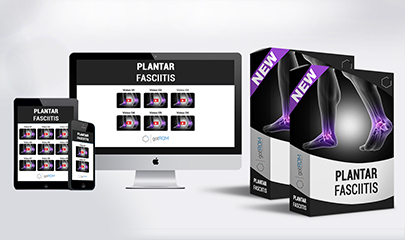

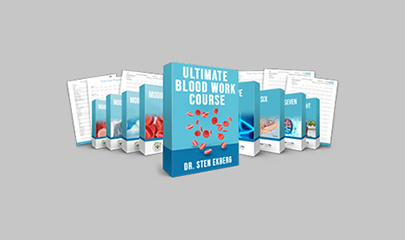










Reviews
There are no reviews yet.